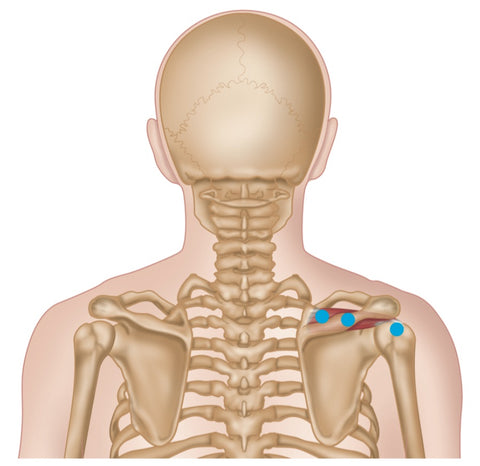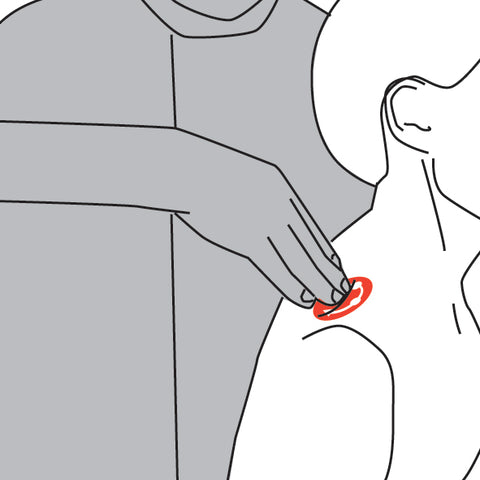Posted by Judith Winer on Nov 01, 2016

Supraspinatus - Common Trigger Point Sites
Trigger points in supraspinatus typically cause deep pain in the lateral shoulder, forearm, and wrist.
The supraspinatus works in conjunction with the deltoid to produce abduction at the glenohumeral joint.
Because of its insertion superiorly onto the greater tuberosity, the muscle pulls the humeral head into the glenohumeral joint, thereby providing the stability needed while the deltoid(pulling halfway down the humerus) abducts the arm.
Trigger Point Signs and Symptoms
Deep pain is reported in the lateral shoulder, forearm, and wrist. Radiating pain into the lateral epicondyle can lead to a misdiagnosis of tennis elbow (lateral epicondylitis), while the shoulder pain can be mistaken for bursitis. Difficulty combing the hair or raising the arm in flexion are signs of the presence of myofascial trigger points.
Anatomy
A member of the rotator cuff, which comprises the supraspinatus, infraspinatus, teres minor, and subscapularis. The rotator cuff helps hold the head of the humerus in contact with the glenoid cavity (fossa, socket) of the scapula during movements of the shoulder, thus helping to prevent dislocation of the joint.
Origin
Supraspinous fossa of scapula.
Insertion
Upper aspect of greater tubercle of humerus. Capsule of shoulder joint.
Action
Initiates process of abduction at shoulder joint, so that deltoid can take over at later stages of abduction.
Nerve
Suprascapular nerve, C4, 5, 6, from upper trunk of brachial plexus.
Basic Functional Movement
Example: holding a shopping bag away from side of body.
Trigger Point Referred Pain Patterns
Belly: deep ache in regimental badge area (4–6 cm). Ellipse leads to zone of pain in lateral epicondyle/radial head. Diffuse pain into lateral forearm.
Insertion: localized zone of pain 5–8 cm over deltoid.
Indications
Loss of power in abduction; painful arc syndrome; night pain/ ache; subacromial bursitis; rotator cuff tendinopathy; deep aching in shoulder which can extend to elbow (i.e. tennis elbow) and occasionally to thumb side of wrist; can be confused with De Quervain’s tenosynovitis; pain on initiation of lifting shoulder sideways; inability to reach behind back; clicking/snapping sounds in shoulder joint.
Common Causes
Carrying heavy objects (e.g. bags, laptops, suitcases) over long distances; heavy lifting from floor to trunk of car; carrying with arms above head; sleeping positions with arms above head; dogs pulling on leash; falls on outstretched arm (e.g. skiing), washing/combing hair; moving heavy furniture; repetitive strain injury (RSI); prolonged computer keyboard use.
Differential Diagnosis
Phase 1 capsulitis. C5–C6 radiculopathy. Subacromial bursitis (adhesive). Calcific tendonitis. Calcium boils. Rotator cuff tendinopathy. Biceps tendonitis.

Trigger point therapy protocols include compression, deep stroking massage, muscle energy techniques, stretching and medical exercise.
Trigger Point Treatment Techniques
| Spray and Stretch | YES |
| Compression | YES |
| Deep Stroking Massage | YES |
| Muscle Energy Techniques | YES |
| Positional Release | YES |
| Dry Needling | YES |
Комментариев нет:
Отправить комментарий